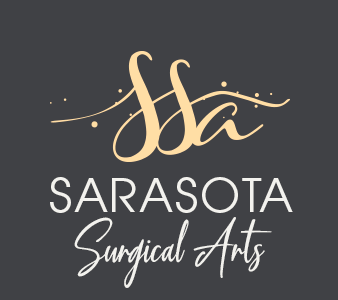The Truth Behind Cosmetic Surgery Scars
People Read: 3,264

When you make an incision in human skin, the body will heal itself, leaving a scar behind. This is also true of facelifts, but the extent of the scarring is something that can be controlled by your cosmetic surgeon.Regardless of the type of facelift you have, a skilled plastic surgeon is the biggest factor in how natural you’ll look after your facial rejuvenation surgery. That’s why using a board-certified surgeon should be at the top of your cosmetic surgeon “shopping” list.
Facelift Incision Placement
The key to a natural-looking facelift is being able to conceal the scarring in a way that makes it invisible.Incisions are typically made from the temporal hairline area, along the helical and tragal contours, trailing off into the occipital area behind the ear. The incision should begin and end within the patient’s hairline, hiding all evidence of cosmetic surgery.In fact, even your own hairdresser shouldn’t be able to find any trace of scarring!A skilled surgeon will make every effort to preserve your existing hairline and the positioning of your ears. In addition, they will make sure the incisions are sutured in such a way as to prevent excessive skin tension.Those facelift horror stories you see – the ones with the extensive scarring – are usually because a surgeon lacked the skills to complete the procedure in a professional way.Any medical amateur can make an incision around your ear, but only a board-certified plastic surgeon with hundreds of facelifts to his or her name is capable of the artwork required to make the scars from a facelift invisible to everyone.
The Facelift
More refined facelift techniques rely on using fewer and smaller incisions. Instead, he or she will manipulate the deeper skin tissues instead of just dragging at surface skin. This gives the patient results that last a lot longer, and also look far more natural.Surgeons aim to place the scars from your incisions behind your hairline and around the contour of your ears, but there are other options. For example, in certain types of facelift surgery the incisions can be hidden underneath your chin.
The Healing Process
A surgeon’s skill during a facelift is almost as important as the aftercare provided during the healing process. Many surgeons now use lasers to assist in scarring reduction in addition to topical gels, which enhance the appearance of your scars.You do have the option of using a Vitamin E cream to reduce scarring in the entire affected area. Following the steps provided by your surgeon for you to fully recover from your facelift is very important – it can be the difference between having an invisible facelift and requiring corrective surgery.At Sarasota Surgical Arts we’ve had many of our former patients compliment us on the fact that their families and friends had no idea they’ve had a facelift.Dr. Sessa has performed facelift surgery in Sarasota for hundreds of satisfied patients. Remember that a bad facelift isn’t something you can hide, so please only trust a board-certified cosmetic surgeon with your physical appearance.
 When you make an incision in human skin, the body will heal itself, leaving a scar behind. This is also true of facelifts, but the extent of the scarring is something that can be controlled by your cosmetic surgeon.Regardless of the type of facelift you have, a skilled plastic surgeon is the biggest factor in how natural you’ll look after your facial rejuvenation surgery. That’s why using a board-certified surgeon should be at the top of your cosmetic surgeon “shopping” list.
When you make an incision in human skin, the body will heal itself, leaving a scar behind. This is also true of facelifts, but the extent of the scarring is something that can be controlled by your cosmetic surgeon.Regardless of the type of facelift you have, a skilled plastic surgeon is the biggest factor in how natural you’ll look after your facial rejuvenation surgery. That’s why using a board-certified surgeon should be at the top of your cosmetic surgeon “shopping” list.



